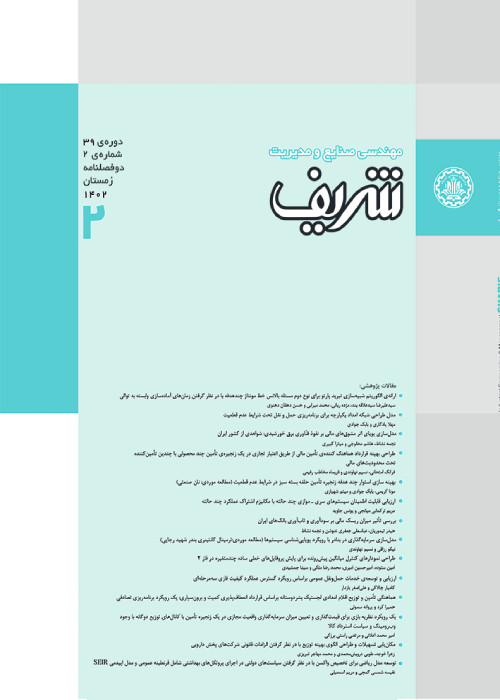OPTIMAL PERIODIC INSPECTION INTERVAL OVER A FINITE TIME HORIZON FOR A TWO-COMPONENT SYSTEM WITH TWO TYPES OF FAILURES
In this paper, the optimal periodic inspection interval over a finite time horizon for a two-component system with two types of failures is determined. The failure type of the first component is hidden. The hidden failure is not self-announcing, i.e., it does not stop the system from working. Thus, it is detected only by inspection; however, any delay in the detection of hidden failures causes an increment in operating costs. The failure type of the second component is of two stages. In other words, the second component has three possible states: healthy, defective, and failed. The defective state is identified just by inspection; however, the failed state is self-announcing, i.e., it reveals itself by stopping the system from working. Each defect and revealed failure of the second component causes a shock to the first component and increases its failure rate. Both components of the system are periodically inspected simultaneously to identify defects and hidden failures. Whenever the system stops working due to the revealed failures of the second component, the first component is also inspected opportunistically to detect the hidden failures. The first component is either minimally repaired or replaced upon inspection if the hidden failure is detected. The second component is also either minimally repaired or replaced upon inspection if found defective or at revealed failure. The total cost of the system includes the periodic and opportunistic inspection costs, downtime penalty costs due to hidden failures, and the minimal repair and replacement costs due to hidden failures, defects, and revealed failures. The goal is to find the optimal periodic inspection interval minimizing the expected total cost over a finite time horizon. In the introduced approach, the inspection model is first developed mathematically. Then, due to the complexity of numerical computing, a simulation algorithm is designed to estimate the expected total cost of the system. Finally, the suggested approach is explained by a numerical example with sensitivity analysis for an electrical distribution system.
- حق عضویت دریافتی صرف حمایت از نشریات عضو و نگهداری، تکمیل و توسعه مگیران میشود.
- پرداخت حق اشتراک و دانلود مقالات اجازه بازنشر آن در سایر رسانههای چاپی و دیجیتال را به کاربر نمیدهد.


